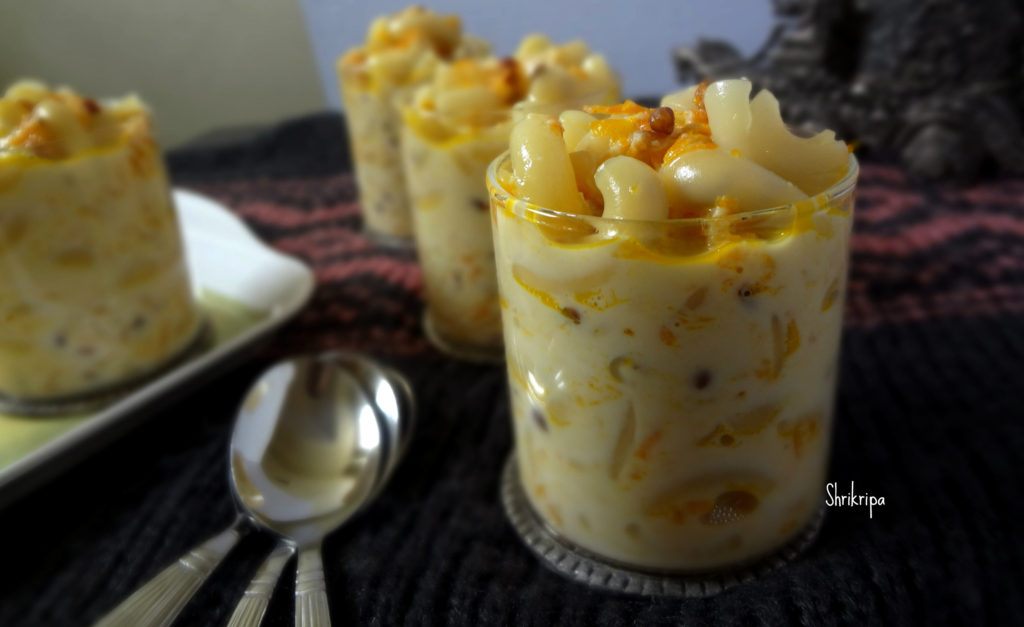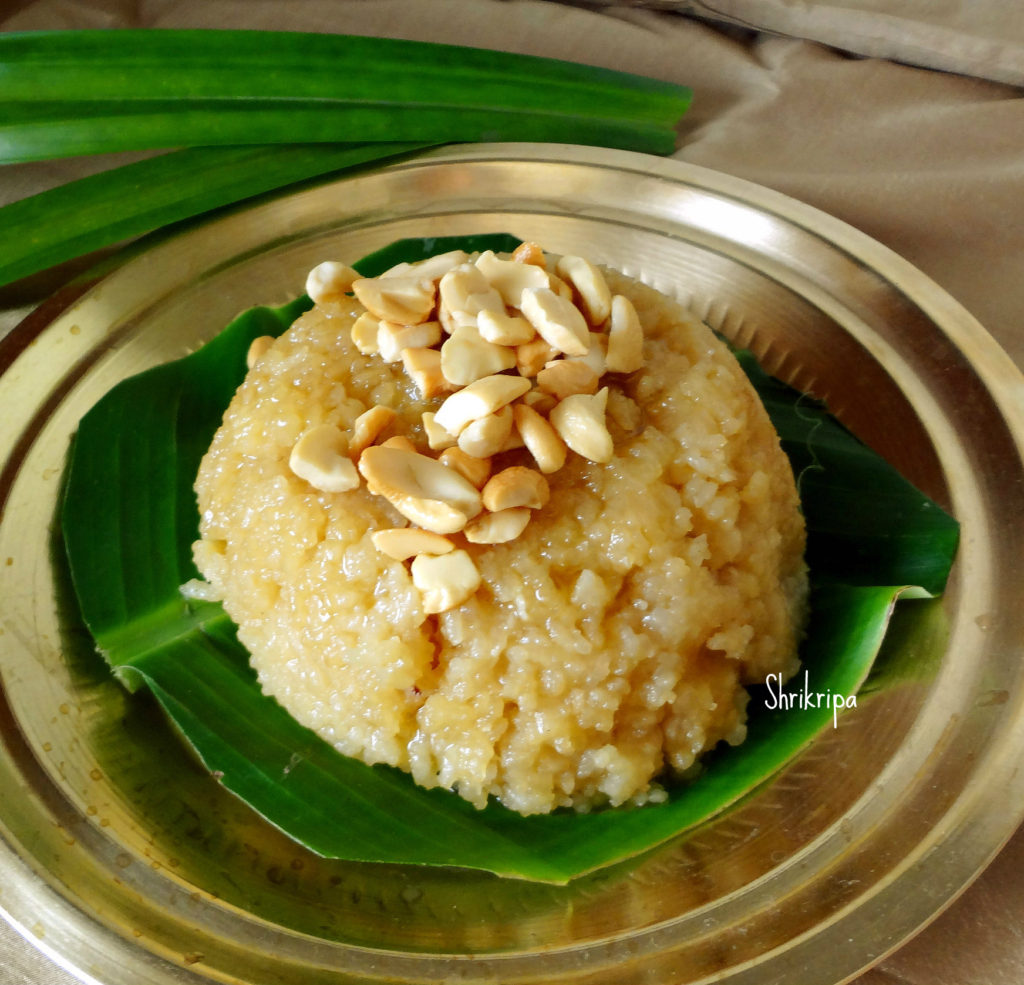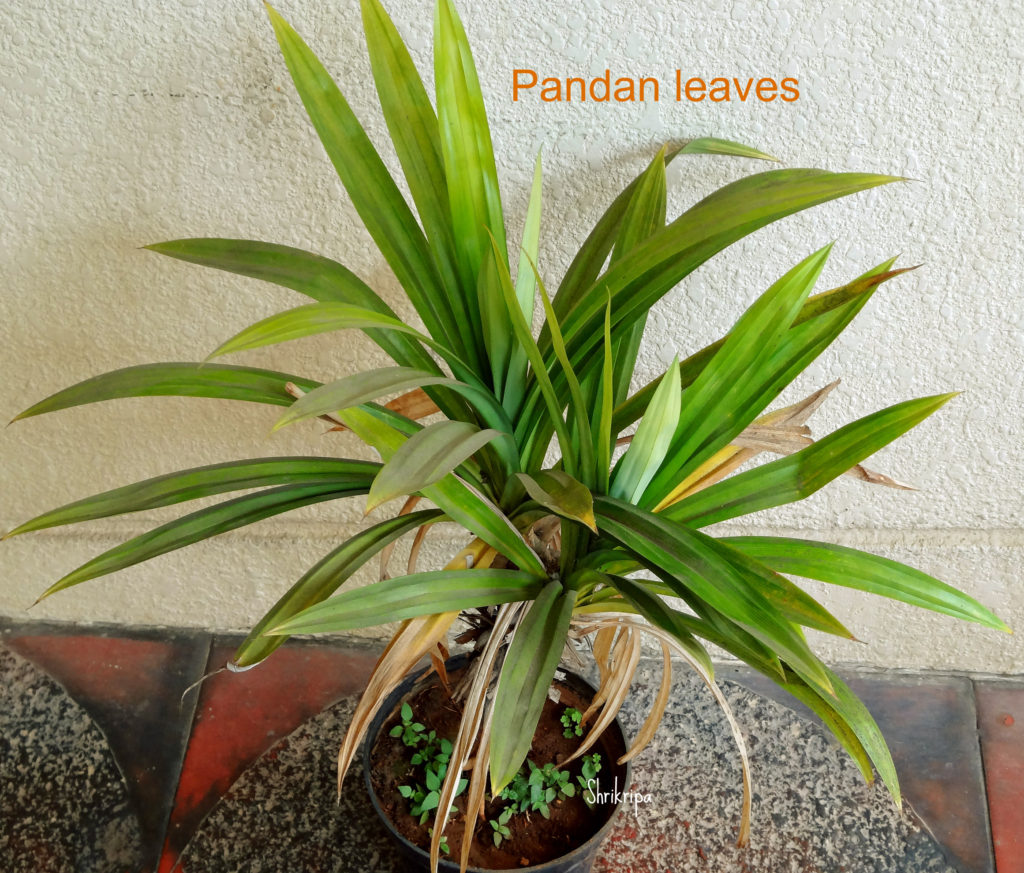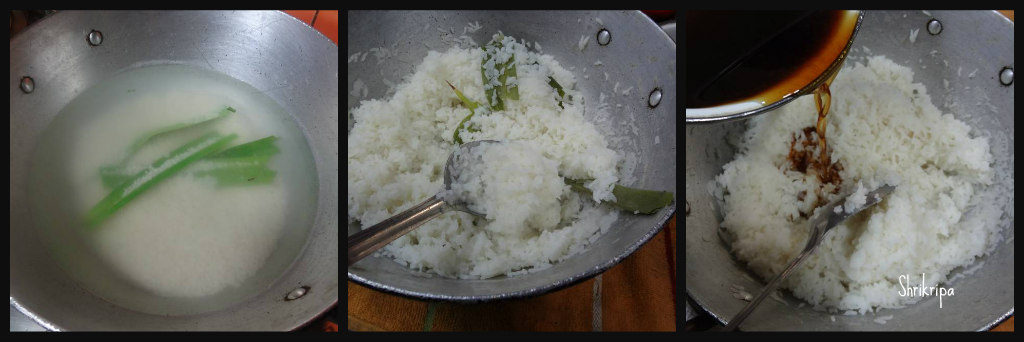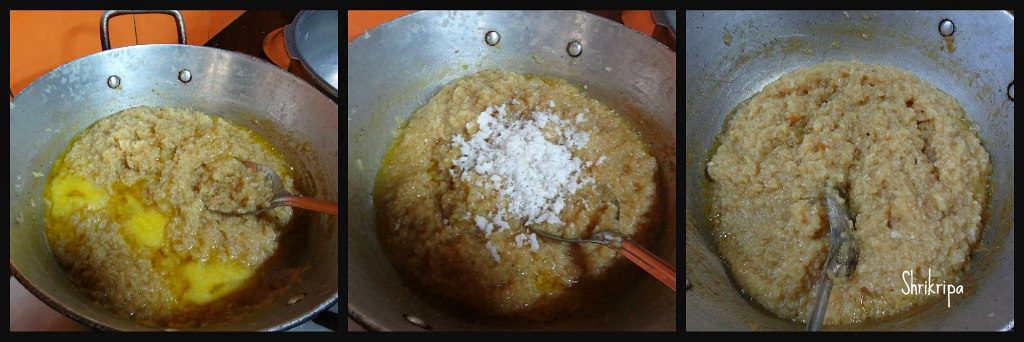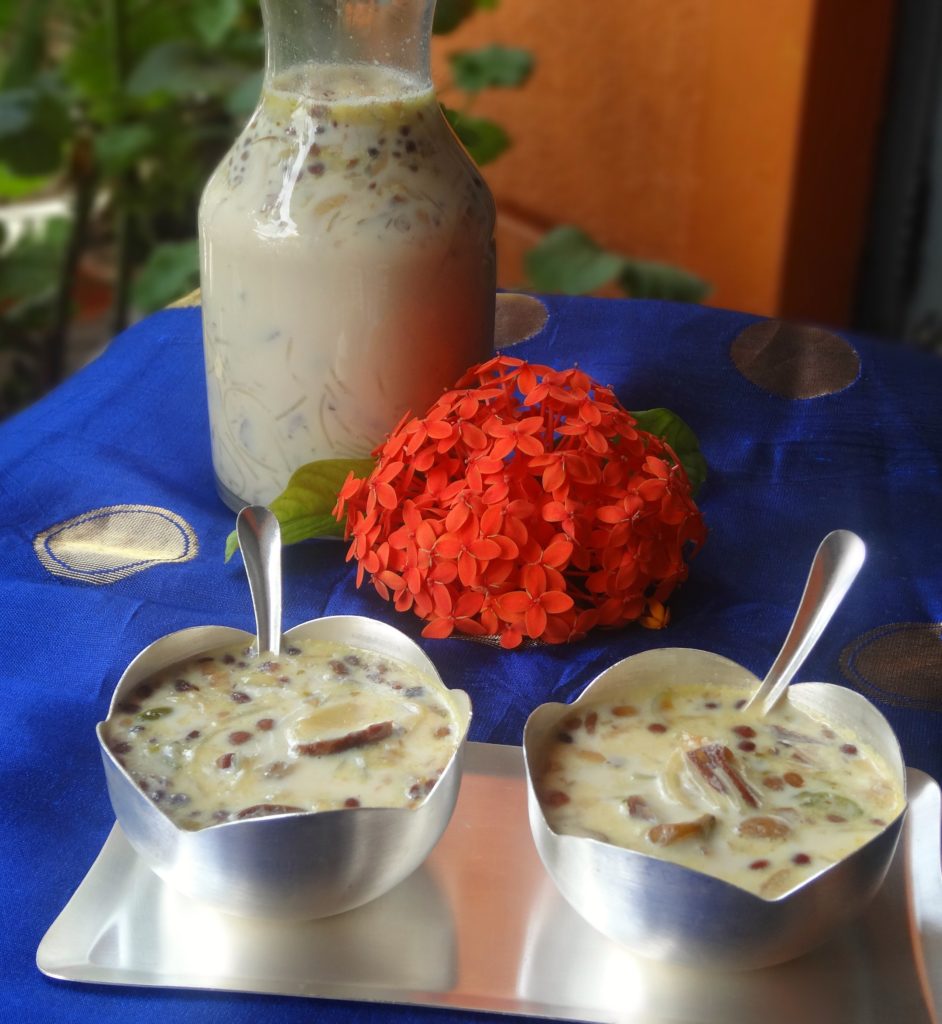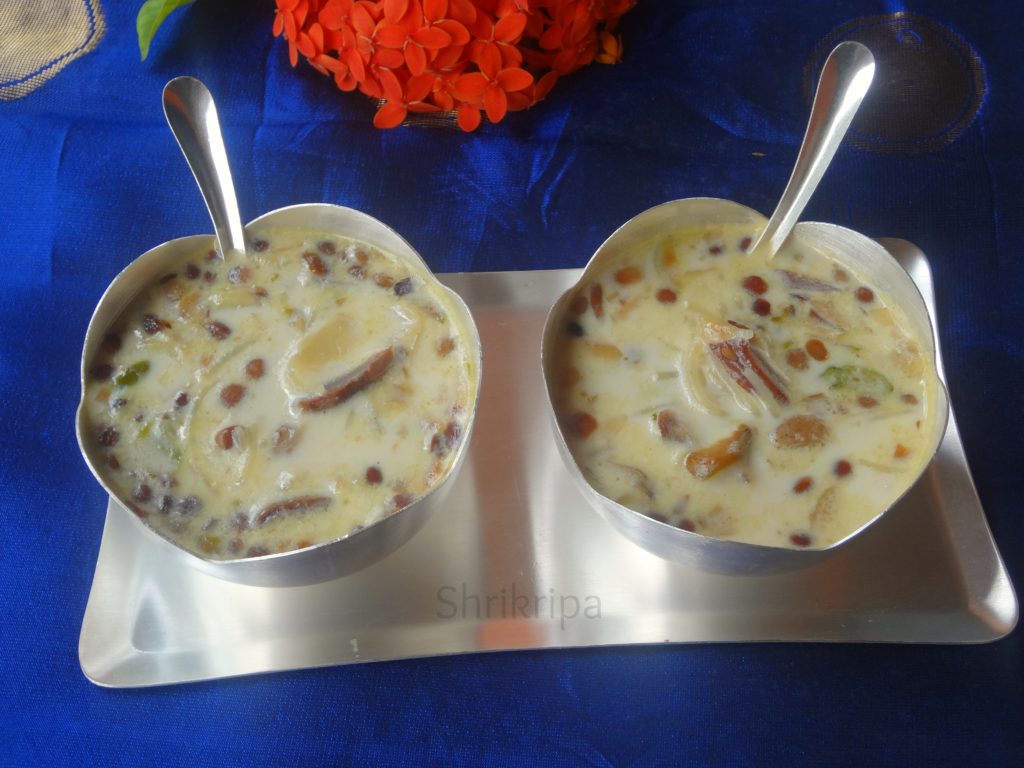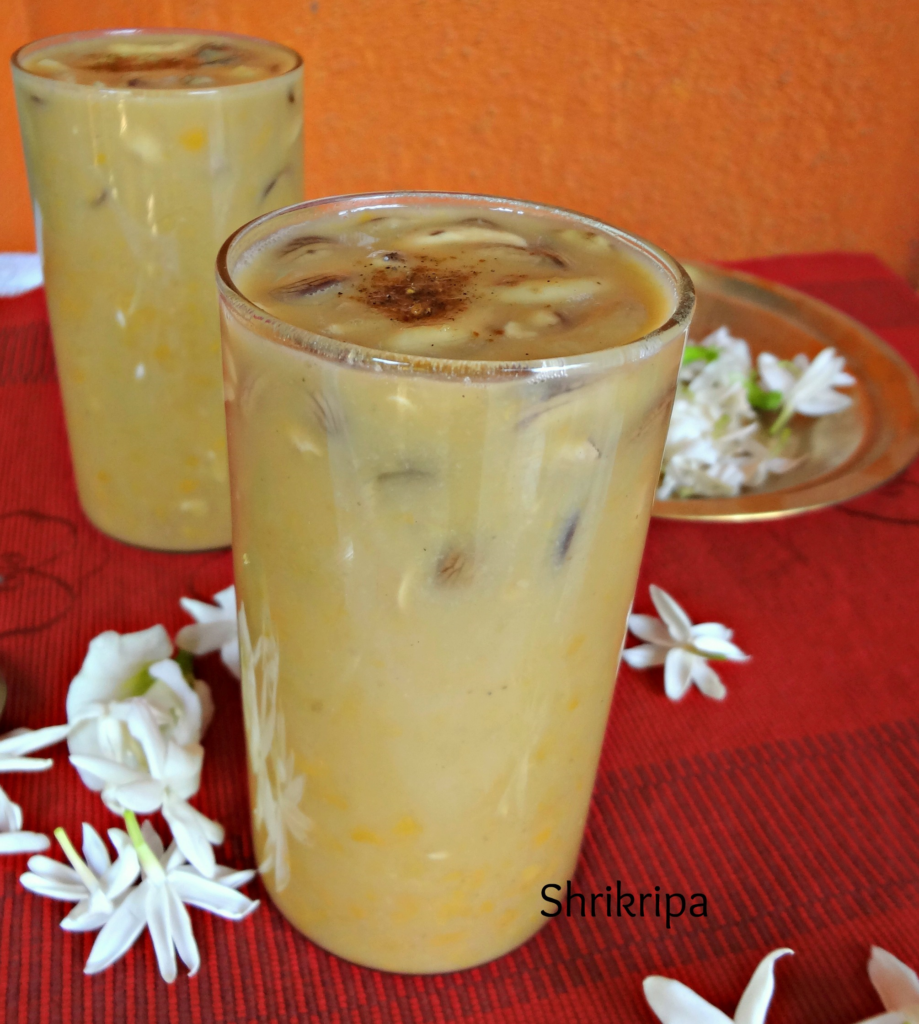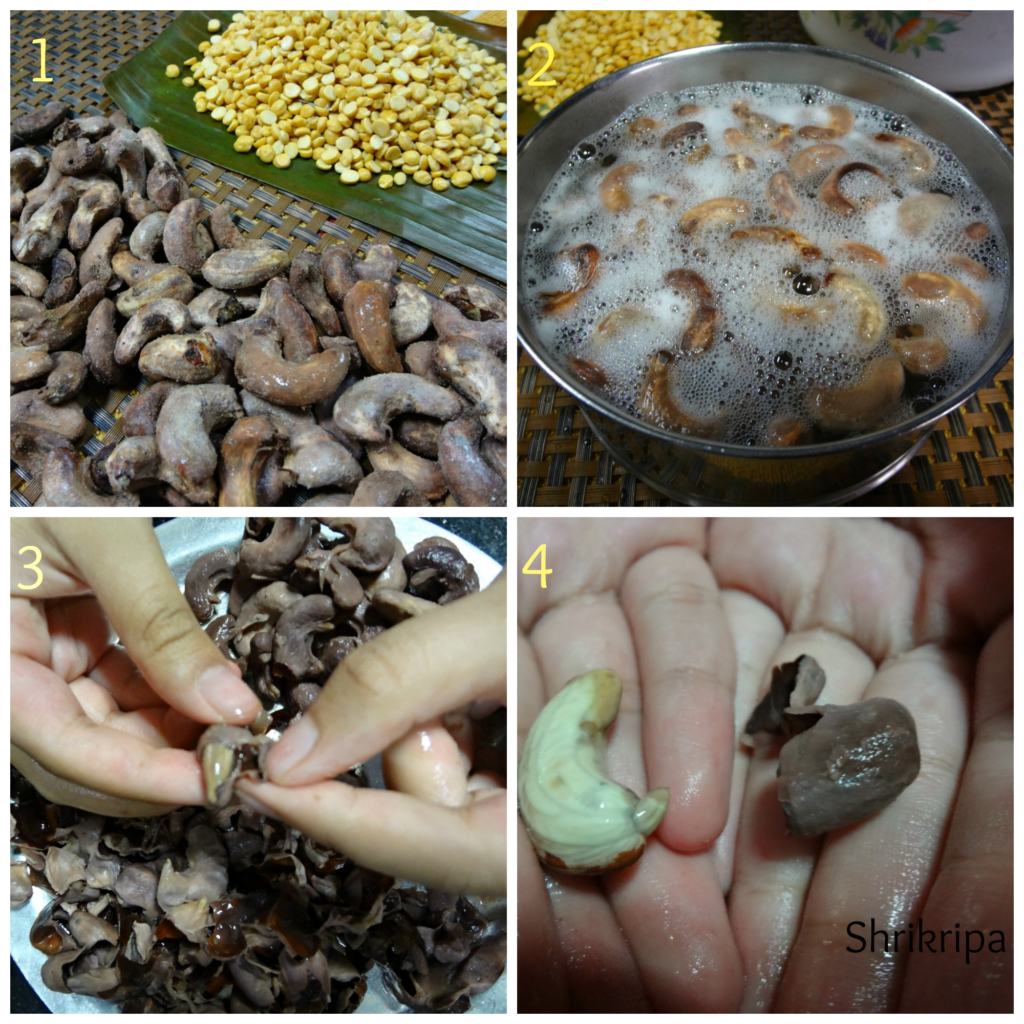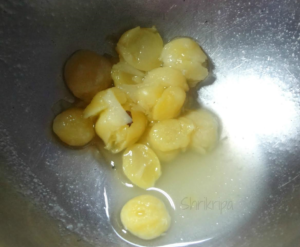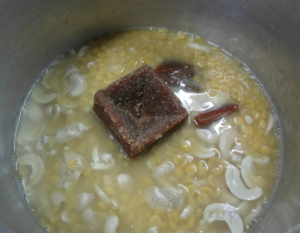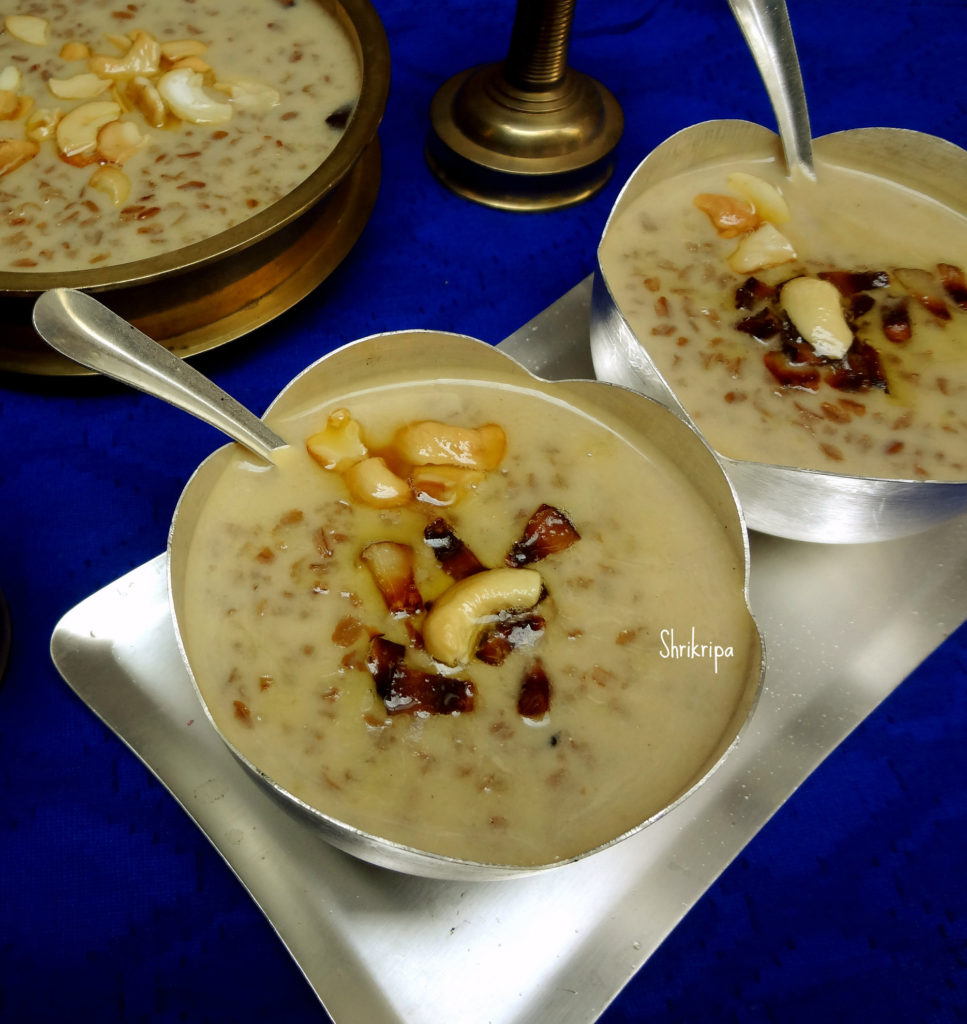Happiness is when one of your readers messages you regarding this recipe, which he used to relish in his childhood and attempted a couple of times without any success. He wanted to know the exact recipe for the same, with proper measurements. When he explained about this payasam, I was clueless and thought it must be his grand mom’s own creation to fulfil the needs of her big family by making it easier. He patiently explained the process about how his grand mom used to prepare it and What amazed me was, as a small child, he has seen and observed how his grand mom does etc. After listening to his explanation, it was like a dream to me. I couldn’t resist, and wanted to try it out As soon as possible. The next day was my wedding anniversary and I grabbed the opportunity and started my experiment. It indeed was a treat and I was super duper happy with the result. Here is the recipe and I am dedicating it to that great soul from whom this recipe came to light and my reader who has shared his childhood nostalgic memories with me by explaining it patiently.

Now we will see how I proceeded with the recipe-
Ingredients:
Dosa rice – 1 small cup
Salt
Jaggery – 4 small cubes
One fresh coconut – to extract milk
Cardamom powder – 1 tea spoon.
Banana leaves – 2 pieces
Ghee – 1 tea spoon
Cashew pieces – 2 table spoons
Method:
-Wash and soak Dosa rice for 2 hours.
-Grind the rice into smooth paste with sufficient water (use soaked water itself) and salt.
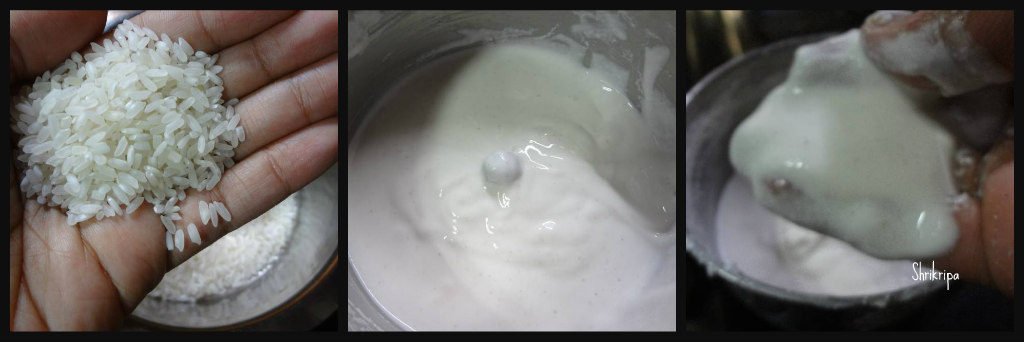
-Batter should be of spreadable consistency (little thinner than regular Dosa batter)
-Next is a coconut milk extraction:
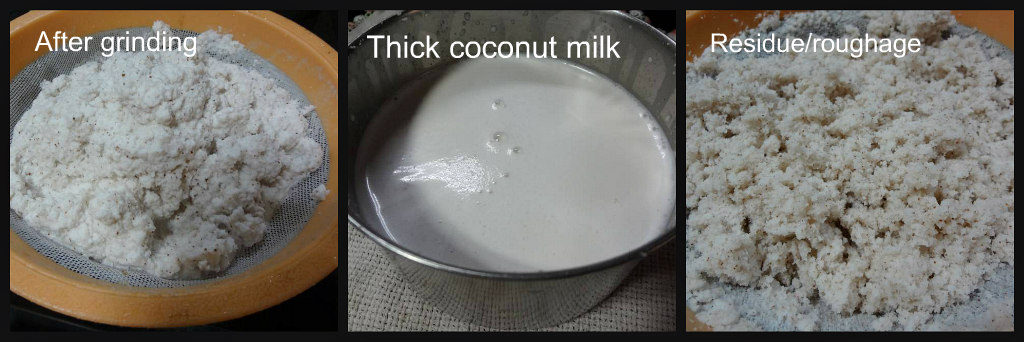
-Take fresh gratings, put one cup of water and grind into smooth paste and extract milk through sieve. This milk is a thick milk and is used at the end. Hence, it should be kept aside separately.
-Now once again take roughage of the coconut, put one more cup of water and grind, sieve the paste and it is our second extraction of milk.
-Repeat the process and take out a third extraction as well and if you are using the roughage of the coconut in any other purpose, you can store it in a freezer for future use.
– Take one wide thick bottomed vessel, Pour diluted, very thin milk (3 rd. extraction) and jaggery. Boil nicely.

-Now pour second extraction of milk (thin milk) and boil further.
-Now start preparing Rotti, take one clean banana leaf, spread a ladle of rice batter and spread as thin as possible and flip this leaf over boiling jaggery solution.
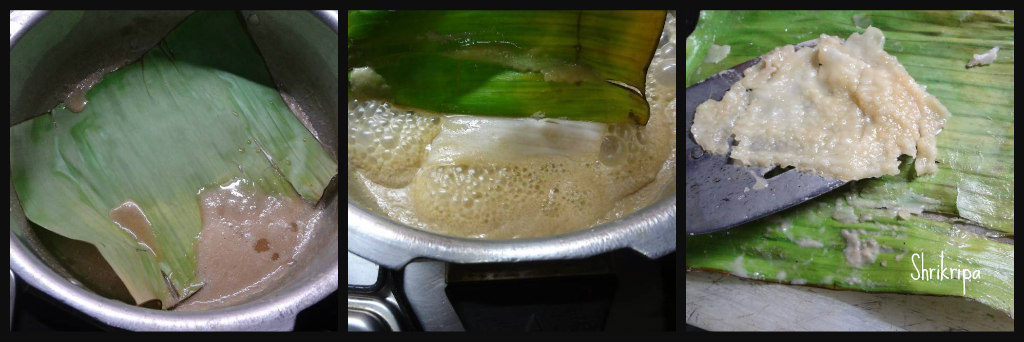
-Within 2 minutes, it will be ready to remove. Now start pulling your banana leaf by peeling it slowly.
-After peeling, if at all some cooked Rotti part remains, take one flat ladle and remove and put it in the boiling jaggery solution.
-Repeat the procedure, until batter finishes. I did it 4 times.
-Now boil this further for 3 to 4 minutes and mix it in-between by using very light hand.

-It is the time to use thick first extract of the coconut milk.
-When it starts boiling, remove from the flame. Add cardamom powder and ghee fried cashews and serve hot.
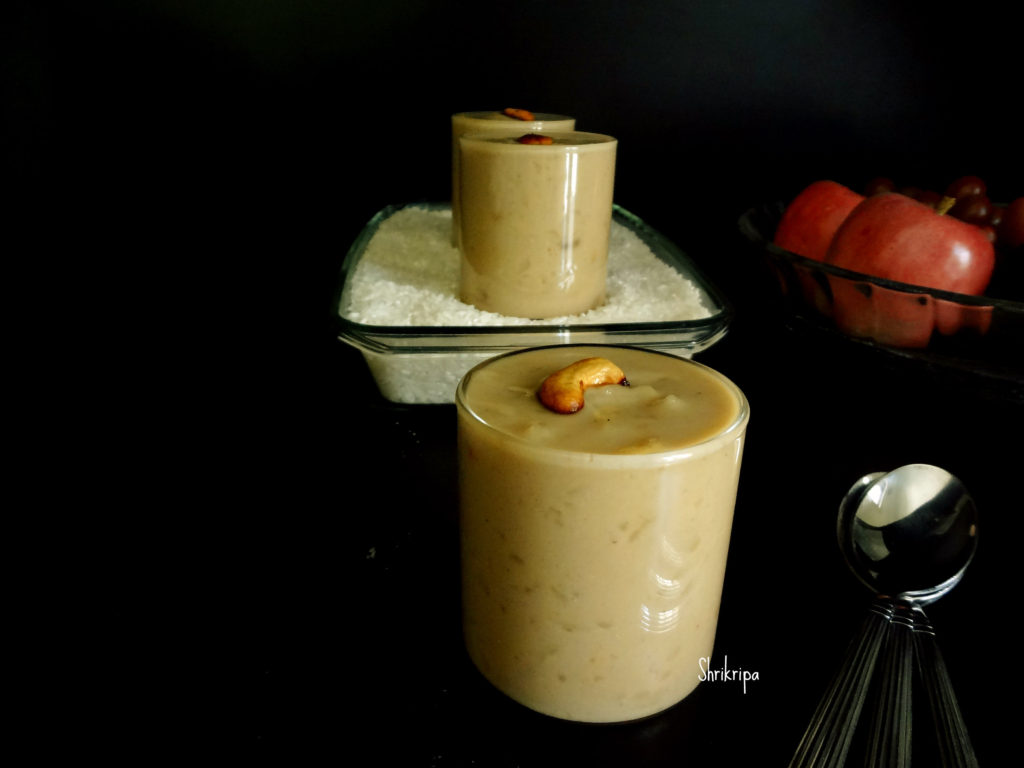
Note:
- We liked this dessert as a Hot option.
- When it cools down, at room temperature it tastes good.
- Under refrigeration, if Rotti pieces becomes slightly hard, one can relish after re heating.




